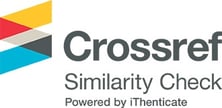Deteksi Financial Statement Fraud Berdasarkan Perspektif Pressure dalam Fraud Triangle
DOI:
10.33395/owner.v3i2.229Abstract
This study aims to determine the effect of the fraud triangle perspective illustrated by financial stability, external pressure, and financial targets on financial statement fraud on manufacturing companies listed on the Indonesia Stock Exchange in 2015-2018. This research is a type of causal associative research with a quantitative approach. The sample in this study were 49 Manufacturing Companies listed on the Indonesia Stock Exchange in 2015-2018. The type of data used in this study is secondary data. Data analysis method used in this study is Logistic Regression Analysis with the help of SPSS 25 software. The results obtained in this study indicate that external pressure has a positive and significant effect on financial statement fraud. Financial targets have a significant negative effect on financial statement fraud. While financial stability does not significantly influence financial statement fraud.
Downloads
Plum-X Analityc
References
Aghghaleh, S. F., Iskandar, T. M., dan Mohamed, Z. M. (2014). Fraud Risk Factors of Fraud Triangle and the Likelihood of Fraud Occurrence?: Evidence from Malaysia. Information Management and Business Review, 6 (1), 1–7.
AICPA. 2002. Consideration of fraud in a financial statement audit. Statement on Auditing Standard No. 99. AICPA. New York.
Amara, I., Ben, A. A., dan Jarboui, A. (2013). Functions and Reliability of International Financial Reporting Systems of Rural Smes in Kwazulu Natal: Knowledge and Understanding of Financial Management. International Journal of Academic Research in Accounting Finance and Management Sciences, 3 (3), 125–132.
Annisya, M., Lindrianasari dan Asmaranti, Y. (2016). Pendeteksian Kecurangan Laporan Keuangan Menggunakan Fraud Diamond. Jurnal Bisnis dan Ekonomi. Fakultas Ekonomi dan Bisnis, Universitas Lampung.
Aprillia., Cicilia, O., dan Sergius, R. P. (2015). The Effectiveness of Fraud Triangle on Detecting Fraudulent Financial Statement: Using Beneish Model and the Case of Special Companies. Jurnal Riset Akuntansi Dan Keuangan. 3 (3), 786–800.
Association of Certified Fraud Examiners. (2016). Report to the Nations on Occupational Fraud and Abuse. Association of Certified Fraud Examiners.
Dalnial, H., Kamaluddin, A., Sanusi, Z. M., dan Khairuddin, K. S. (2014). Accountability in Financial Reporting: Detecting Fraudulent Firms. Procedia - Social and Behavioral Sciences. 145, 61–69.
Darmawan, A., dan Oktoria, S. (2017). The Impact of Auditor Quality, Financial Stability, and Financial Target for Fraudulent Financial Statement, Journal of Applied Accounting and Taxation. 2 (1), 9–14.
Ernst&Young. (2009). Detecting Fiancial Statement Fraud: What Every Manger Needs to know.
Ghozali, I. (2013). Aplikasi Analisis Multivariate Dengan Program IBM SPSS 21 Update PLS Regresi. Semarang: Badan Penerbit Universitas Diponegoro.
Maghfiroh, N., Ardiyan, K., dan Syafnita (2015). Analisis Pengaruh Financial Stability, Personal Financial Need, External Pressure dan Ineffective Monitorng Pada Financial Statement Fraud dalam Perspektif Fraud Diamond. Jurnal Ekonomi dan Bisnis. Fakultas Ekonomi Universitas Pekalongan.
Manurung, D. T. H., dan Hardika, A. L. (2015). Analysis of Factors That Influence Financial Statement Fraud In The Perspective Fraud Diamond: Empirical Study on Banking Companies Listed on The Indonesia Stock Exchange Year 2012 to 2014. International Conference on Accounting Studies (ICAS).
Nugraheni, N. K., dan Triatmoko, H. (2017). Analisis Faktor-Faktor Yang Mempengaruhi Terjadinya Financial Statement Fraud: Perspektif Diamond Fraud Theory (Studi Pada Perusahaan Perbankan Yang Terdaftar Di Bursa Efek Indonesia Periode 2014-2016). Jurnal Akuntansi dan Auditing. Fakultas Ekonomi dan Bisnis Universitas Sebelas Maret.
Priantara, D. (2013). Fraud Auditing & Investigation. Mitra Wacana Media. Jakarta.
Purba, B. P. (2015). Fraud dan Korupsi: Pencegahan, Pendeteksian, dan Pemberantasannya. Jakarta Timur: Lestari Kiranatama.
Rachmania, A. (2017). Analisis Pengaruh Fraud Triangle Terhadap Kecurangan Laporan Keuangan Pada Perusahaan Makanan dan Minuman Yang Terdaftar di Bursa Efek Indonesia Periode 2013-2015. Fakultas Ekonomi dan Bisnis Universitas Pakuan
Ross, A. S. (1973). The Economic Theory of Agency: The Principal's Problem.
Skousen, C. J., Smith, K. R. dan Wright, C. J. (2009) Detecting and Predicting Financial Statement Fraud : The Effectiveness of The Fraud Triangle and SAS
Tiffani, L. dan Marfuah (2017). Deteksi Financial Statement Fraud dengan Analisis Fraud Triangle Pada Perusahaan Manufaktur yang Terdaftar di Bursa Efek Indonesia. Jurnal Akuntansi dan Auditing Indonesia.
Wahyuni dan Budiwitjaksono, B. S. (2017). Fruad Triangle sebagai Pendeteksi Kecurangan Laporan Keuangan. Jurnal Akuntansi. Fakultas Ekonomi dan Bisnis UPN Veteran, Jawa Timur.
Zaki, N. M. (2017). The Appropriateness of Fraud Triangle and Diamond Models in Assesing The Likelihood of Fraudulent Financial Statements- An Empirical Study on Firms Listed in The Egyptian Stock Exchange. International Journal of Social Science and Economic Research. ISSN:, 2 (2), 2403–2433.
Downloads
Published
How to Cite
Issue
Section
License
Copyright (c) 2019 Muhammad Yunus, Ompon Lastiur Sianipar, Kharisma Yudha Saragih, Amelia Amelia

This work is licensed under a Creative Commons Attribution-NonCommercial 4.0 International License.

















